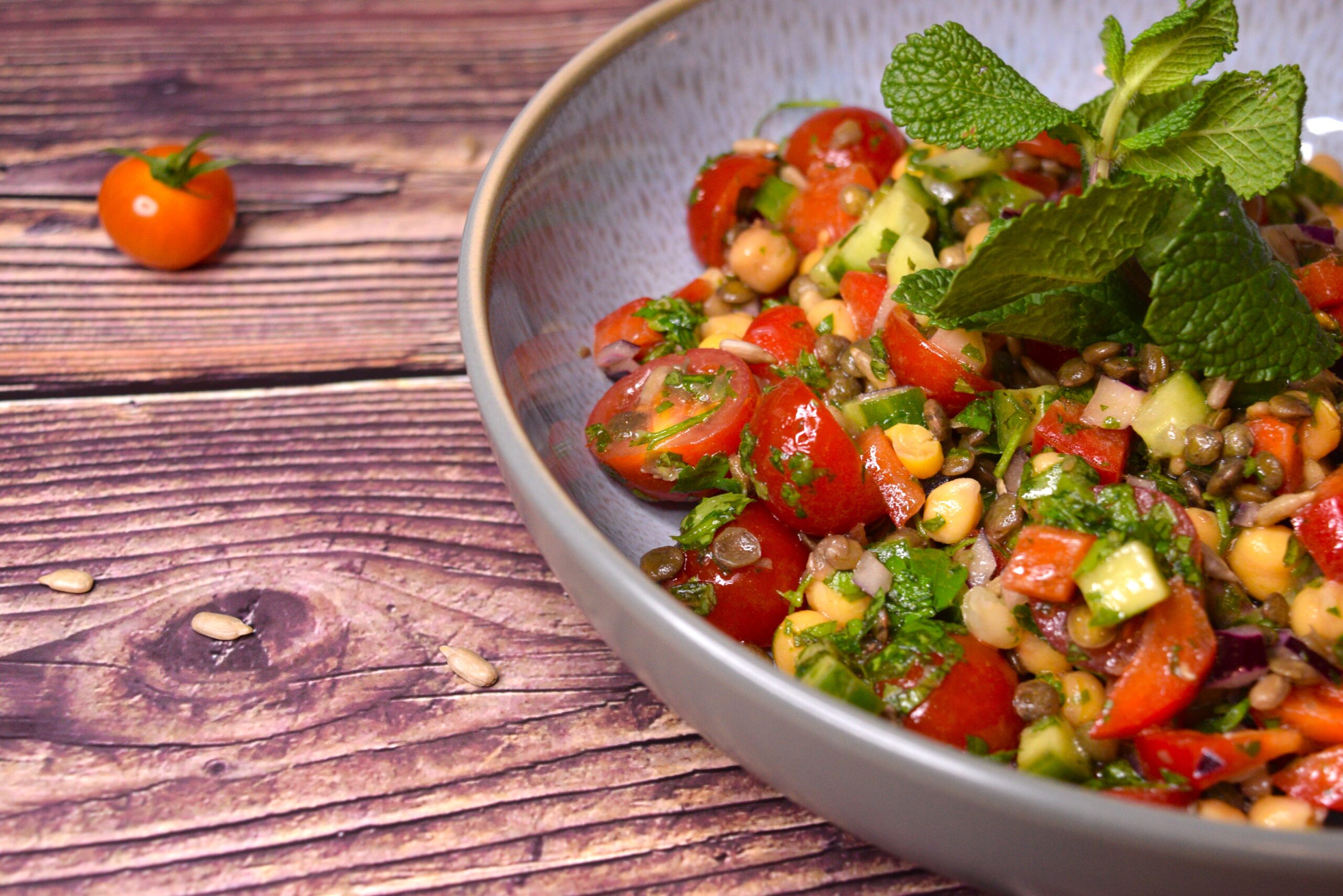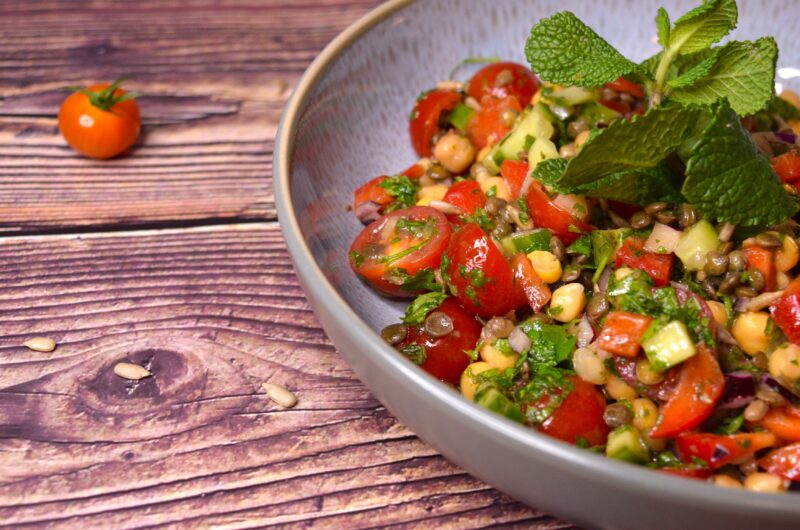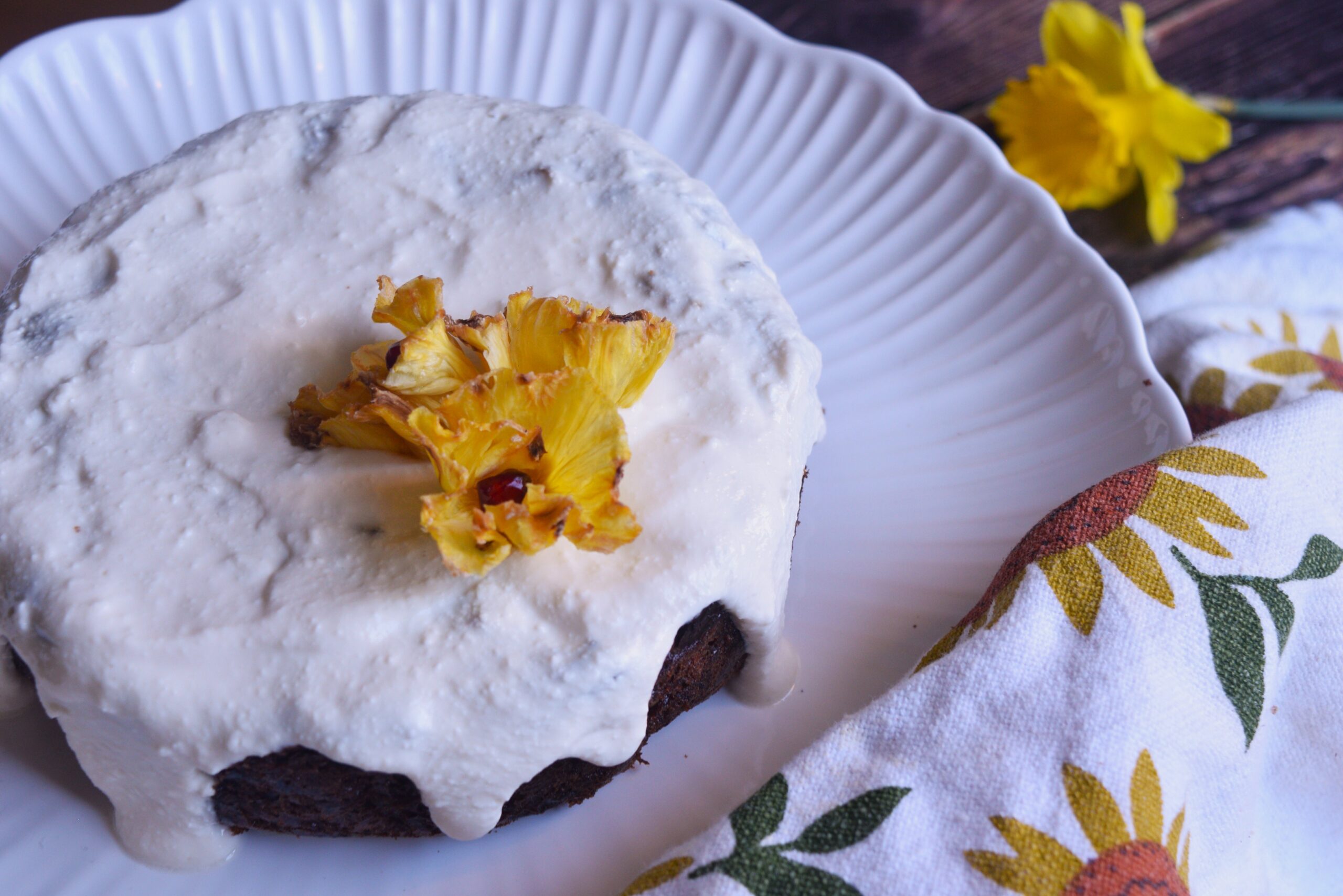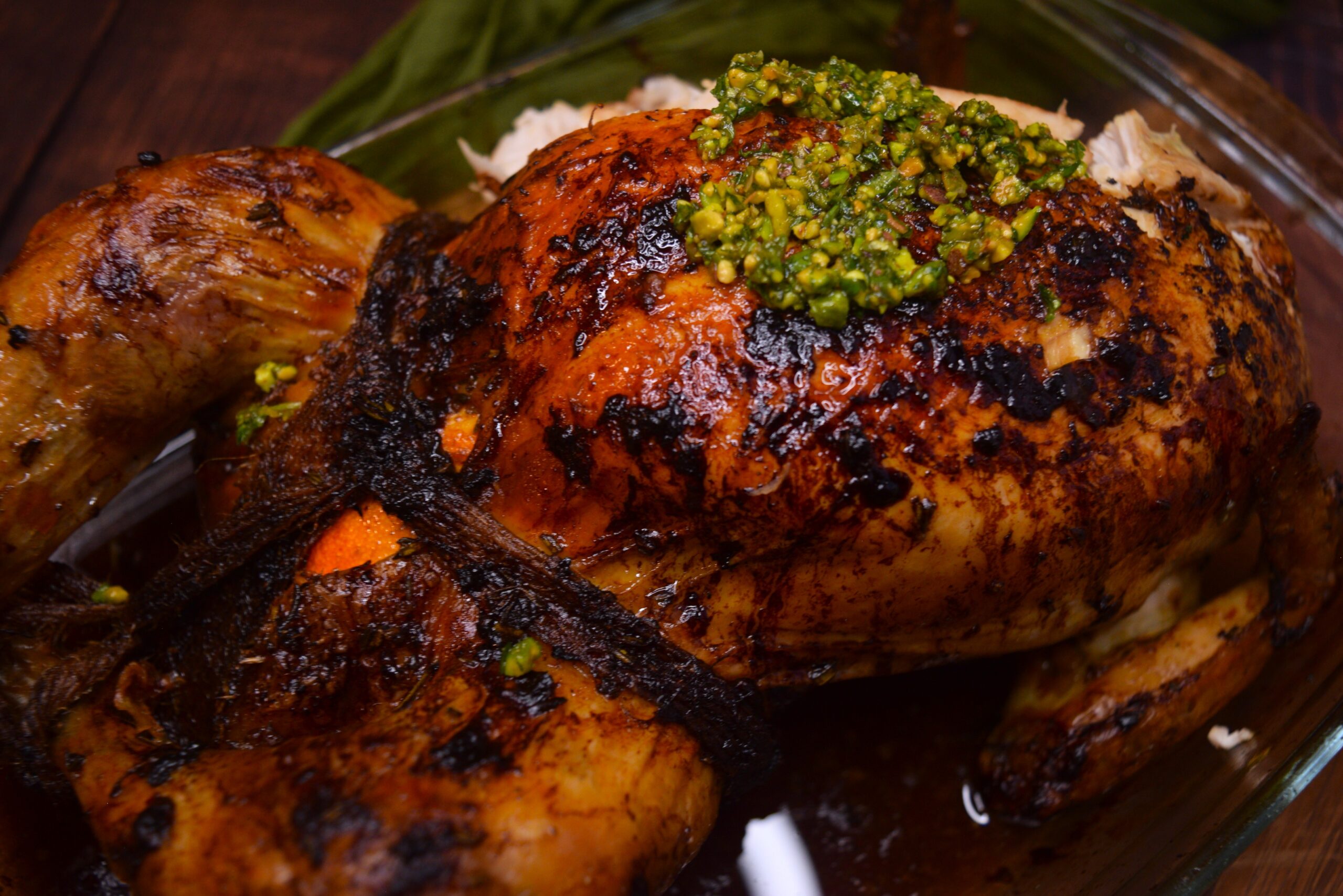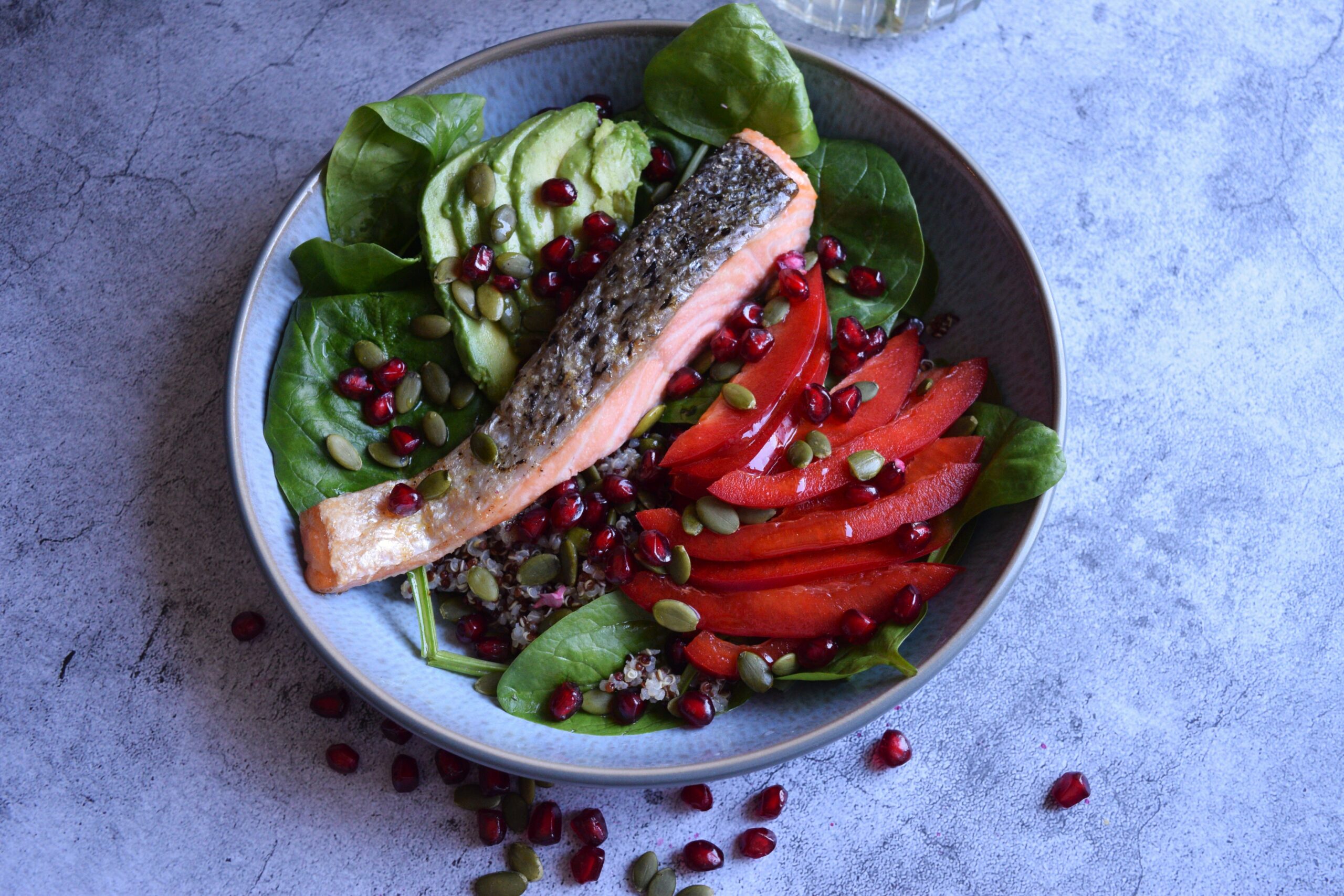Happy New Year! 🎉 As we step into 2025, many of us are setting intentions to prioritize health, wellness, and mindful living. If one of your resolutions is to eat healthier—perhaps more vegetables, more plant-based protein, or simply more intentional meals—then this recipe is for you.
This Chickpea & Lentil Salad is a powerhouse of nutrients: rich in plant-based protein, loaded with fiber, and bursting with fresh flavors. It’s not just a salad; it’s a meal that nourishes your body and mind, helping you start the year feeling energized and inspired. And since January marks Veganuary, this dish is 100% vegan—proof that healthy eating can be hearty, satisfying, and oh-so-delicious.
Mindful Eating: Start with Intention
Mindful eating begins with thoughtful ingredient choices. For this recipe, we’re using ingredients that are simple, whole, and packed with goodness. Chickpeas and lentils are not only affordable and versatile but also rich in protein and essential nutrients, making them ideal staples for a balanced diet.
By incorporating a variety of colorful vegetables, fresh herbs, and a zesty dressing, this salad becomes a vibrant celebration of what it means to eat with intention: fueling your body while delighting your senses.
Vibrant Chickpea & Lentil Salad 🌱
Difficulty: Easy4
servings328
kcal20
minutesIngredients
- For the Salad:
1 cup cooked green or brown lentils (or 1 can, drained and rinsed)
1 cup cooked chickpeas (or 1 can, drained and rinsed)
1 cup cherry tomatoes, halved
1 cucumber, diced
1 red bell pepper, diced
1/4 cup red onion, finely chopped
1/4 cup fresh parsley, chopped
1/4 cup fresh mint leaves, chopped (optional but adds freshness)
1/4 cup toasted sunflower seeds or pumpkin seeds (for crunch)
- For the Dressing:
3 tablespoons olive oil
1 tablespoon lemon juice (freshly squeezed)
1 teaspoon Dijon mustard
1 teaspoon maple syrup or agave (optional for a hint of sweetness)
1 clove garlic, minced
Salt and pepper to taste
Directions
- Prepare the Ingredients
- If using dried lentils or chickpeas, cook them according to package instructions until tender, then let them cool. Canned options work just as well for convenience—just rinse them thoroughly.
- Chop the vegetables and herbs as directed.
- Make the Dressing
- In a small bowl or jar, whisk together olive oil, lemon juice, Dijon mustard, maple syrup, minced garlic, salt, and pepper. Taste and adjust the flavors as needed.
- Assemble the Salad
- In a large salad bowl, combine the lentils, chickpeas, cherry tomatoes, cucumber, bell pepper, red onion, parsley, and mint. Toss gently to mix.
- Drizzle the dressing over the salad and toss again until everything is evenly coated.
- Add the Final Touches
- Sprinkle toasted sunflower seeds or pumpkin seeds over the top for added texture and a boost of healthy fats.
- Serve & Enjoy
- Serve immediately or chill in the fridge for 20-30 minutes to let the flavors meld together. This salad keeps well in the fridge for up to 3 days, making it perfect for meal prep!
Recipe Video
Why You’ll Love This Salad
- Packed with Protein: Lentils and chickpeas are plant-based protein superstars, helping you stay full and satisfied.
- Full of Veggies: The rainbow of vegetables provides fiber, vitamins, and antioxidants.
- Vegan & Gluten-Free: Perfect for those embracing Veganuary or following a plant-based lifestyle.
- Quick & Easy: With minimal cooking, it’s a breeze to prepare—even on busy days.
A Fresh Start for 2025
This salad is more than just a meal; it’s a way to embrace healthier habits in the new year. By incorporating simple, wholesome ingredients, we can nourish our bodies and set the tone for a mindful, balanced approach to food in 2025.
Remember, eating healthier doesn’t mean giving up on flavor or enjoyment. It’s about making choices that feel good—body, mind, and soul.
Let’s make this year delicious, nutritious, and full of joy. Here’s to mindful eating and vibrant meals all year long!
Nutrition Facts
4 servings per container
- Amount Per ServingCalories328
- % Daily Value *
- Total Fat
13.5g
21%
- Saturated Fat 1.7g 9%
- Potassium 0mg 0%
- Total Carbohydrate
42g
15%
- Dietary Fiber 33.6g 135%
- Sugars 9g
- Protein 14.2g 29%
* The % Daily Value tells you how much a nutrient in a serving of food contributes to a daily diet. 2,000 calories a day is used for general nutrition advice.

